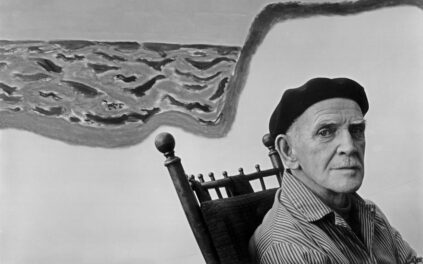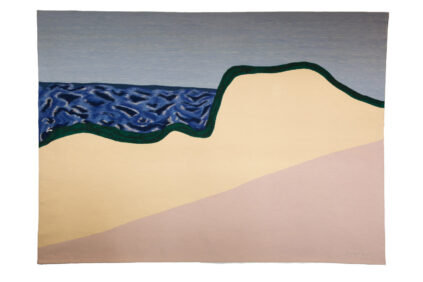Milton Avery
Artwork
Biography
Milton Avery’s collaboration with the Gloria Ross Gallery in New York
Introduction
Milton Avery, a pillar of modern American art, has left his mark not only on the world of painting, but also on that of tapestry. His collaboration with New York’s Galerie Gloria Ross has played an essential role in bringing his art to a wider public in textile form, enabling them to appreciate the depth and beauty of his work.
Galerie Gloria Ross: A Place of Artistic Fusion
Introduction to the Gallery
The Gloria Ross Gallery, located in New York, is renowned for its specialization in textile art. Founded by Gloria F. Ross, an art and tapestry enthusiast, the gallery established itself as a meeting place for painters and master weavers. Her aim was to translate paintings into tapestries, creating unique pieces that combine the artistic vision of painters with the traditional skills of weavers.
The Vision of Gloria Ross
Gloria Ross saw tapestry as a natural extension of painting, a way of giving new life to works of art through the texture and extra dimension offered by textiles. She collaborated with many artists to transform their paintings into tapestries, and Milton Avery was one of the most remarkable among them.
Collaboration with Milton Avery
The beginning of the collaboration
The collaboration between Milton Avery and Galerie Gloria Ross began in the 1960s, a period when Avery was already well established as a master of modern art. Gloria Ross was attracted by the bold compositions and vivid colors of his paintings, seeing in them immense potential for the creation of tapestries.
The transformation process
The process of transforming Milton Avery’s paintings into tapestries required close collaboration between the artist and the weavers. Avery was deeply involved in the choice of colors and materials, ensuring that the tapestries faithfully reflected his artistic intent. Translating his works into tapestries captured the simplicity and depth of his compositions in a way that emphasized the texture and unique dimension of the textile.
Notable works
Some of Avery’s most iconic works have been transformed into tapestries thanks to this collaboration. For example, works such as “Seated Girl with Dog” and “Green Sea” were recreated as tapestries, offering a new perspective on these famous compositions. The tapestries have not only preserved the distinctive colors and shapes of Avery’s paintings, but have also added a tactile richness that makes them even more captivating.
Impact of the Collaboration
Reception and Influence
The reception of Milton Avery’s tapestries has been extremely positive. Collectors and art lovers have appreciated the way the tapestries capture the essence of the paintings while offering a different sensory experience. The collaboration has also inspired other artists to explore tapestry as a medium, expanding the possibilities of contemporary artistic creation.
A lasting legacy
The legacy of Milton Avery’s collaboration with Galerie Gloria Ross lives on today. The tapestries resulting from this collaboration are considered works of art in their own right, celebrated for their beauty and complexity. They continue to be exhibited in galleries and museums, testifying to the artistic vision shared by Avery and Ross.
Conclusion
The collaboration between Milton Avery and the Gloria Ross Gallery in New York was a landmark chapter in the history of textile art. By transforming Milton Avery’s works into tapestries, Gloria Ross not only honored the art of painting but also opened up new avenues for artistic expression. On our site, you can discover these magnificent tapestries, a celebration of Milton Avery’s legacy and Gloria Ross’s innovative vision. Explore our collection to learn more about this unique collaboration and be inspired by the timeless beauty of the textile works.


